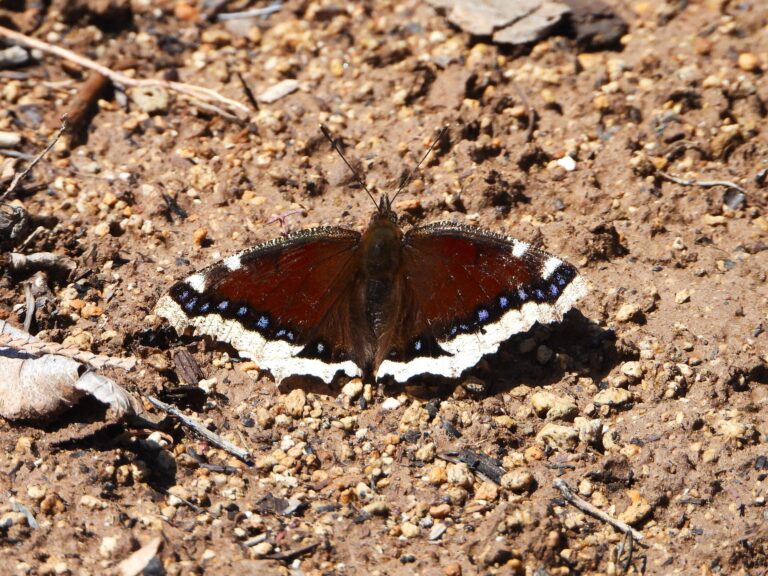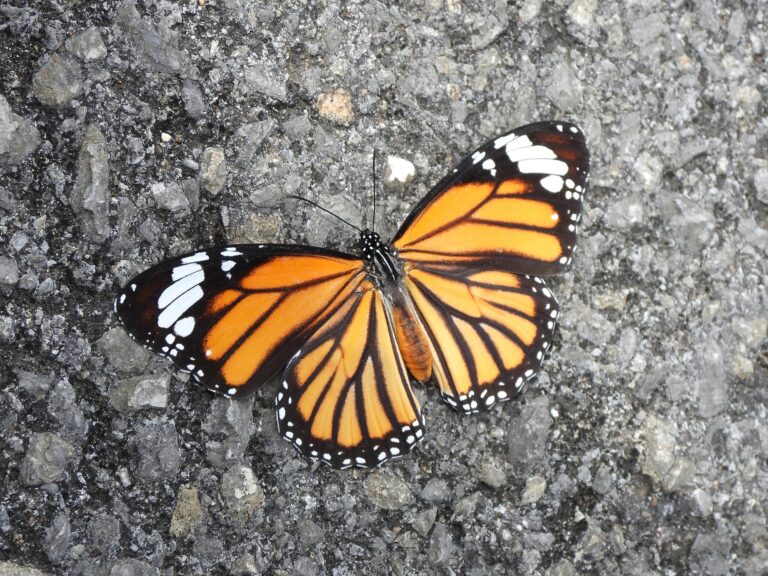Squeaking Silkmoth (Rhodinia fugax) – Wildlife of Japan
Introduction
The Squeaking Silkmoth, called Usutabiga in Japan, is one of the country’s most iconic autumn moths. Belonging to the family Saturniidae, it appears when most insects have already disappeared, fluttering through cold forests with its soft yellow wings and transparent “windows.” Its larvae are known to squeak audibly when disturbed, earning the species its English name.
Appearance
Adults have a wingspan of about 75–110 mm. Males are smaller and darker—orange to dark brown—with slightly pointed forewings, while females are paler yellow and rounder in shape. Both sexes feature a round, translucent patch on each wing, a unique trait among Japanese silk moths. The body is thick and covered with dense hair, helping the moth tolerate low autumn temperatures.
Similar Species
Usutabiga is sometimes confused with other silk moths:
- Japanese Emperor Moth (Saturnia japonica) – lacks transparent eyespots; flies earlier in late summer.
- Japanese Tau Emperor (Saturnia jonasii) – smaller, with opaque eye markings.
- Luna Moths (Actias artemis, A. aliena) – bright green color and long hindwing tails, absent in Usutabiga.
Habitat & Distribution
This species occurs throughout Japan—from Hokkaidō to Kyūshū—and extends to Korea, China, and the Russian Far East. It inhabits mixed and broad-leaved forests, especially satoyama areas with oaks, chestnuts, and maples. Adults emerge mainly in October to November, one of the latest flight seasons among Japanese moths.
Behavior
Adults do not feed; their sole purpose is reproduction. They are primarily active in the afternoon to early evening, though males can sometimes be seen flying in the morning or during daytime even in chilly weather. Females release pheromones soon after emergence to attract mates.
Larvae exhibit a unique defensive behavior—they squeak when threatened by contracting their body and forcing air through spiracles.
Diet
Caterpillars feed on a wide variety of deciduous trees: oaks (Quercus serrata, Q. acutissima), chestnut, cherry, elm, hornbeam, and maple. Adults do not feed at all.
Reproduction
The Squeaking Silkmoth has one generation per year. Females lay eggs in late autumn—often on or near their own cocoon. The eggs overwinter and hatch in spring. Larvae feed through spring and early summer before spinning a green, lantern-like cocoon (yama-kamasu) suspended from branches. Adults emerge the following autumn.
Conservation
The species is not endangered, but local populations depend on the preservation of satoyama and deciduous forests. Because its cocoons hang through winter, pruning and forest clearing can easily destroy them. Maintaining forest edges and leaving some natural twigs through winter helps support their survival.
Author’s Impression
Among Japan’s silk moths, Usutabiga emerges at the latest time of the year. It is surprising to see them flying actively even in cold air—sometimes males appear in the morning or early afternoon when sunlight filters through the forest. Their endurance in such conditions shows the quiet strength of nature at the edge of winter.








